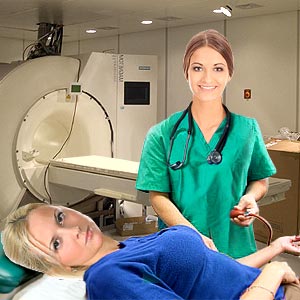Infertility Test

Infertility tests help determine the cause of infertility in any couple. These tests help in identifying the problem and in identifying the person having the problem. Common infertility tests include:
- Physical examination
- Semen analysis
- Blood procedures
- Any special procedures if required
Who should opt for infertility tests?
- Couples who are in their early 20s or 30s, who have not used birth control measures but have not conceived for more than a year.
- Couples who are aged above 30, who have not used birth control measures but have not conceived for more than six months.
- If there is any physical problem like no ovulation in women, no ejaculation in men or irregular menstrual cycle in women.
What can infertility tests do?
Infertility tests can help the couple and their physician determine the cause for infertility. In most cases infertility tests do help find the cause for infertility and couples are treated accordingly. In few cases the cause cannot be determined even through infertility tests. Infertility problems in women are easily curable when compared to men. In case a man turns out to be infertile and if there is no treatment for him, then conception can happen through assisted reproductive technology.
Most of the infertility tests can be done in your own doctor's place by an obstetrician or reproductive endocrinologist. Few tests will be done in an operation theatre. Infertility tests cost a lot; they can also be very stressful on the couple. It is advisable for the couple to talk to each other and understand what they exactly require before they take professional help for their problem.
Routine fertility tests
Routine fertility tests are not painful and include three basic tests:
- Sperm evaluation
- Ovulation study
- Evaluating the reproductive anatomy to make sure that the egg and sperm meet rightly to fertilize.
In case nothing is determined from these tests, additional in-detail tests are ordered for both the man and the woman.
Immunobead Test (IBT): This test is done with a blood sample of the woman incubated with a sperm sample to check for the presence of any anti-sperm antibodies. Since these antibodies have an effect on fertility, this fertility test determines the origin of the antibodies.
Laparoscopy: Laparoscopy is often used to visualize and examine the structure of the ovaries, tubes and other pelvic organs for any likely cause for infertility. Any underlying endometriosis can be treated during this procedure.
Endometrial biopsy: This test is usually performed about a week prior to a woman's menstrual period. A catheter is placed into the woman's uterus to take a small piece of tissue from the lining of the uterus. The cells are then examined for effect of progesterone.
Transvaginal ultrasound: An ultrasound of the reproductive organs and their surroundings throw light on the development of follicles within the ovaries. This test also helps determine if the uterine lining is sufficiently developed to sustain a pregnancy.
Hysterosalpingogram: This procedure helps in checking the opening of the fallopian tubes as well as any underlying uterine problems. An x-ray of the uterus and fallopian tubes is taken with a dye that is injected at the mouth of the uterus.
Hysteroscopy: This procedure involves usage of a lighted scope that examines the uterine lining to either take samples of tissues or open blockage in the fallopian tubes.
Top of the Page: Infertility Test
Tags:#infertility test
 Infertility Test
Infertility Test Infertility Counseling
Eating Disorders and Fertility
Secondary Infertility
Infertility Service
Artificial Insemination
IVF And Infertility
Top of the Page: Infertility Test
Popularity Index: 100,626

